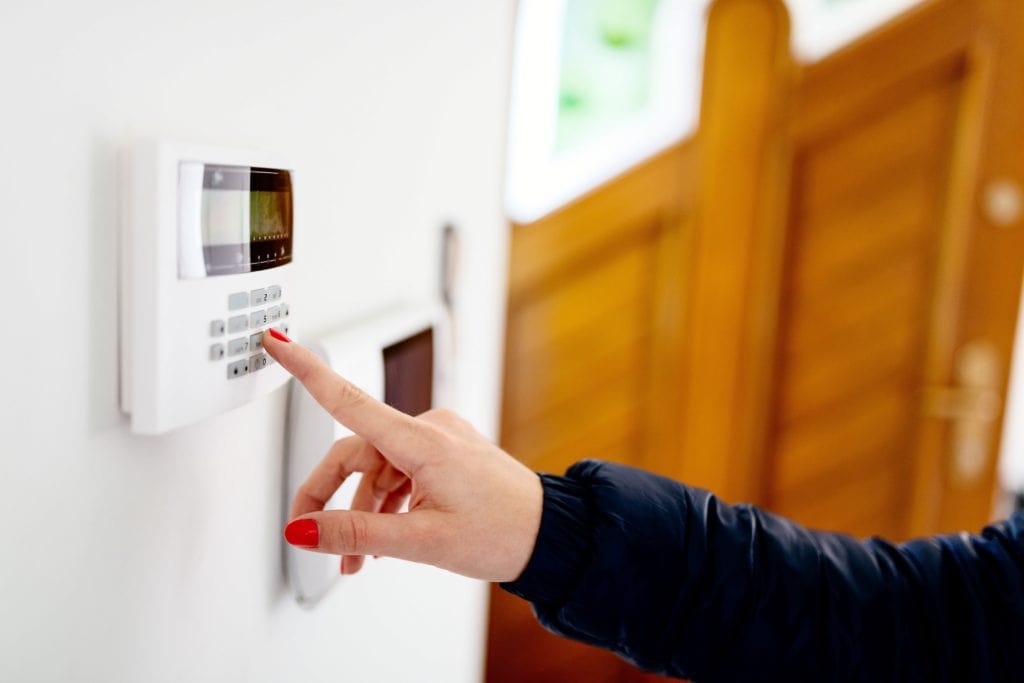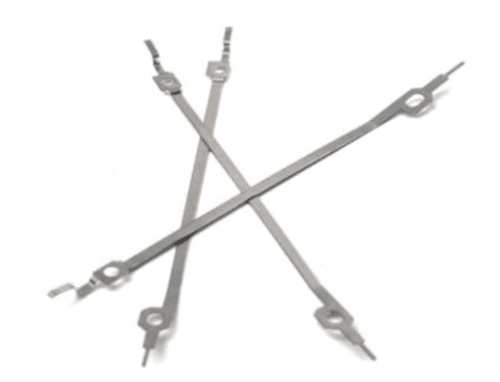January 9, 2023


Feeling safe at home and knowing your home is secure while you’re away helps to keep our stress levels in check, giving us one less thing to worry about. For many, that means investing in a home security system.
Though widely available and not a new technology, home security equipment has benefited from recent advancements in electronics and connectivity, so homeowners and even renters have many options that are easy to operate and access.
Here, we’ll look at some of today’s latest home security system concepts, common components and functionality, and examples of parts in these systems that can be manufactured with progressive die stamping. This kind of performance stamping is critical to the intricate, often customized parts that go into security system hardware and electronics.
From simple to complex, modern home security systems are more accessible than ever for homeowners and renters. And because it’s so easy to keep watch over your property and belongings, even away from home, these systems are growing in popularity.
They’re also popular because they work. According to research cited in an article from US News and World Report, most include some combination of cameras, motion sensors, and alarms, making them a powerful deterrent to would-be burglars. Many also offer continuous monitoring for carbon monoxide or fire.
There are many options available at different price points, including do-it-yourself or professionally installed and monitored systems for a house and outbuildings (such as a garage or apartment). Most systems offer some flexibility to meet different needs, including the ability to adjust motion sensor sensitivity to prevent pets from triggering alarms or remote access to temporarily disarm the system.
In the past, wired systems connected to landline phones were the norm; however, most are now wireless, using cellular or WiFi (including primary and backup systems) to connect to police, fire, and/or monitoring centers. In addition to being less invasive (i.e., no drilling into walls, windows, and doors), a great advantage is that there are no physical phone or power lines a thief can cut. Wireless systems rely on battery power to send or receive signals instead of being hardwired into the home’s electricity.
Generally speaking, security systems fall into two categories. Comprehensive systems with cameras, door and window switches, and motion detectors are usually professionally installed. Installers can also position cameras and sensors at precise locations and angles to be less obvious to potential burglars and also to avoid tripping the system with a false alarm (such as a pet setting off an inside motion detector or tall plants blowing in front of outdoor ones).
Systems like these are also usually coordinated for easy access and monitoring of all the components with a single app, control panel, or fob. Some can also be integrated with larger smart home systems, so the same app that controls lights, appliances, and garage doors also controls the security system. Professionally installed systems often require a lease for the equipment and a service contract.
The second category is a more modular, off-the-shelf approach. Consumers can pick and choose the individual components that work for their situation such as a motion-activated floodlight, doorbell camera, or closed-circuit camera. Because they are not part of an integrated system, these options are more likely to require multiple apps or controllers to manage. In most cases, the consumer installs the equipment and owns it outright.

As security systems and hardware evolve, the need for a reliable supplier of the tiny metal parts that go inside remains unchanged. That’s where CEP Technologies comes in.
We are IATF 16949:2016 certified with TUV Rheinland of North America and specialize in miniature to small custom metal stampings in medium to high-volume production runs. Our tonnages range from 15 to 60 tons, and run material from .002” to 0.080” thick. We also offer prototyping services to test design concepts, determine optimal materials, or handle lower volume production needs.
To see examples of the parts we manufacture, you can request a free sample kit, contact us, or request a quote for your next project. We hope to hear from you!